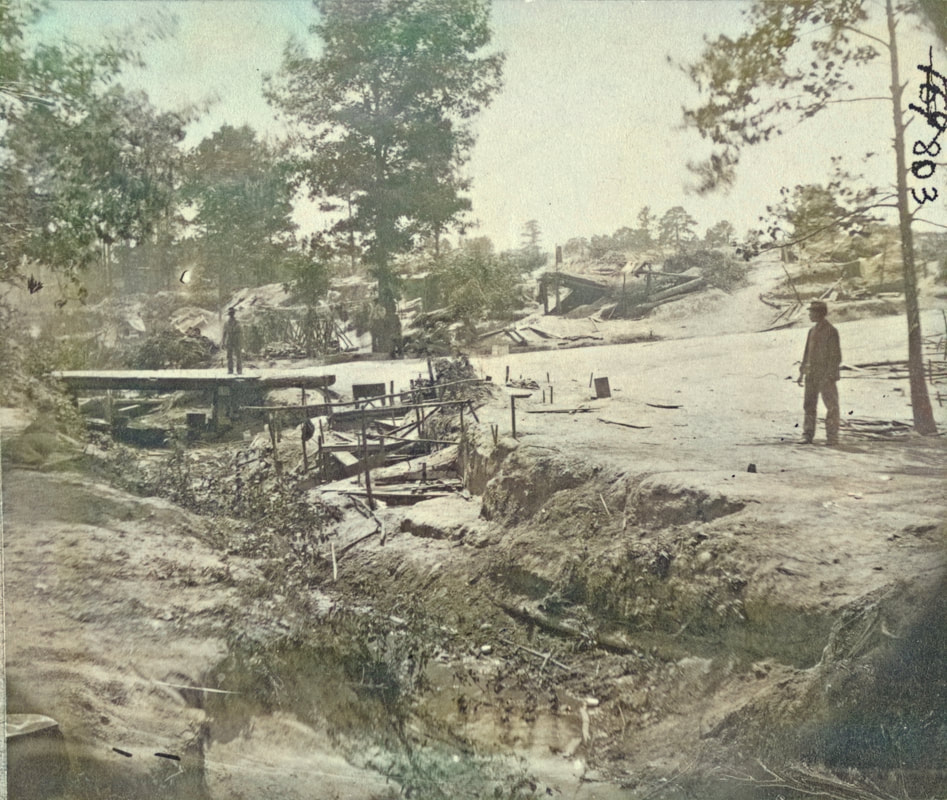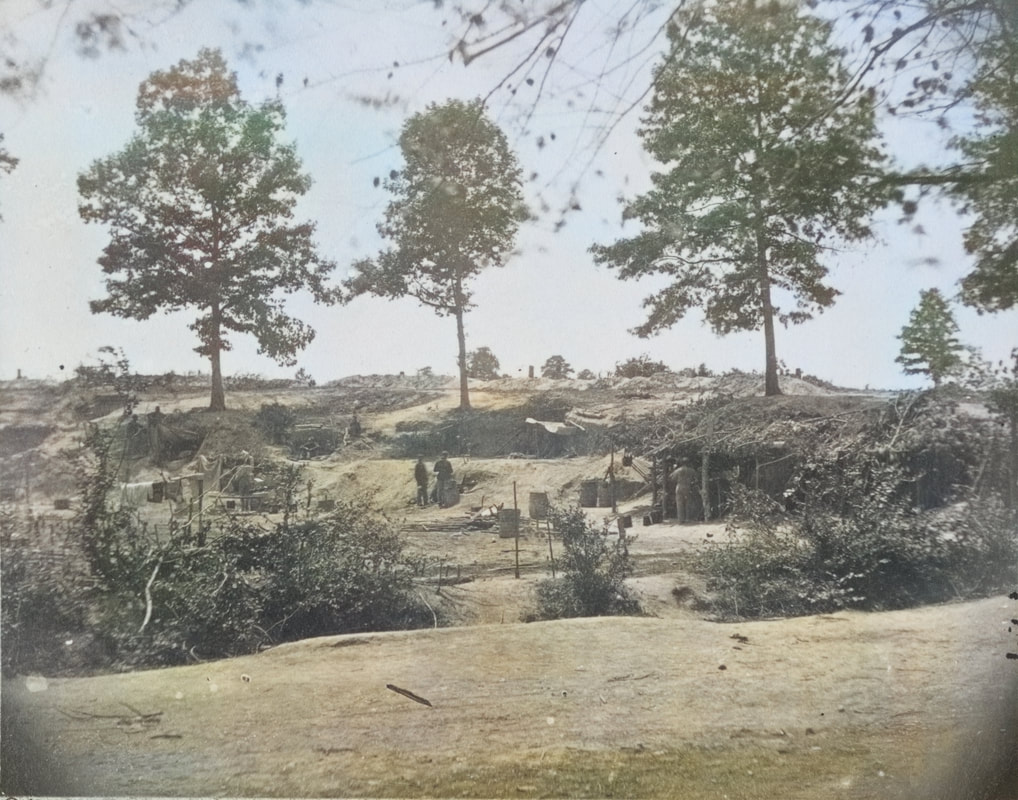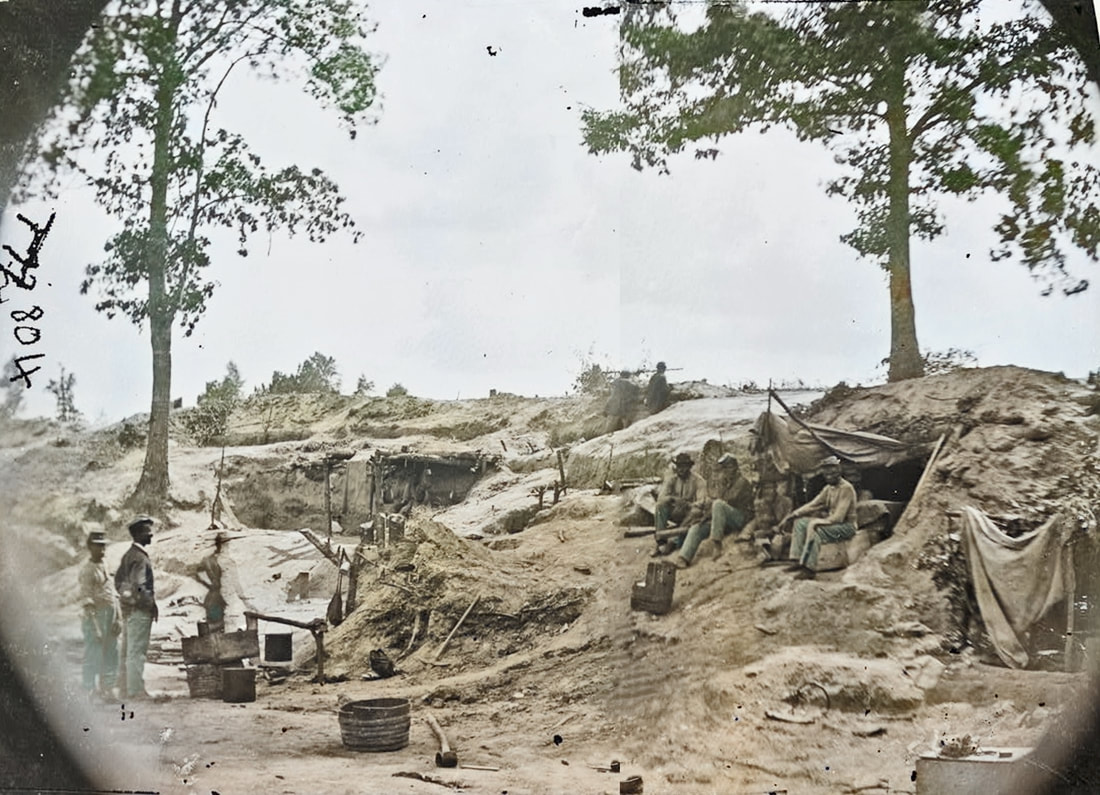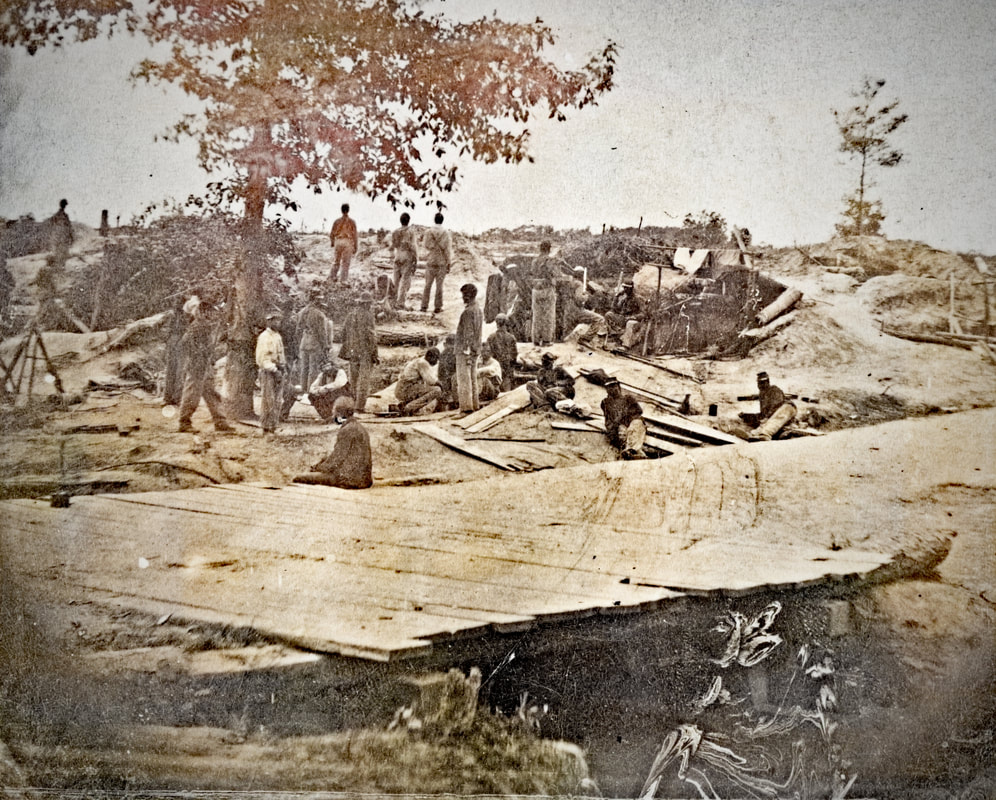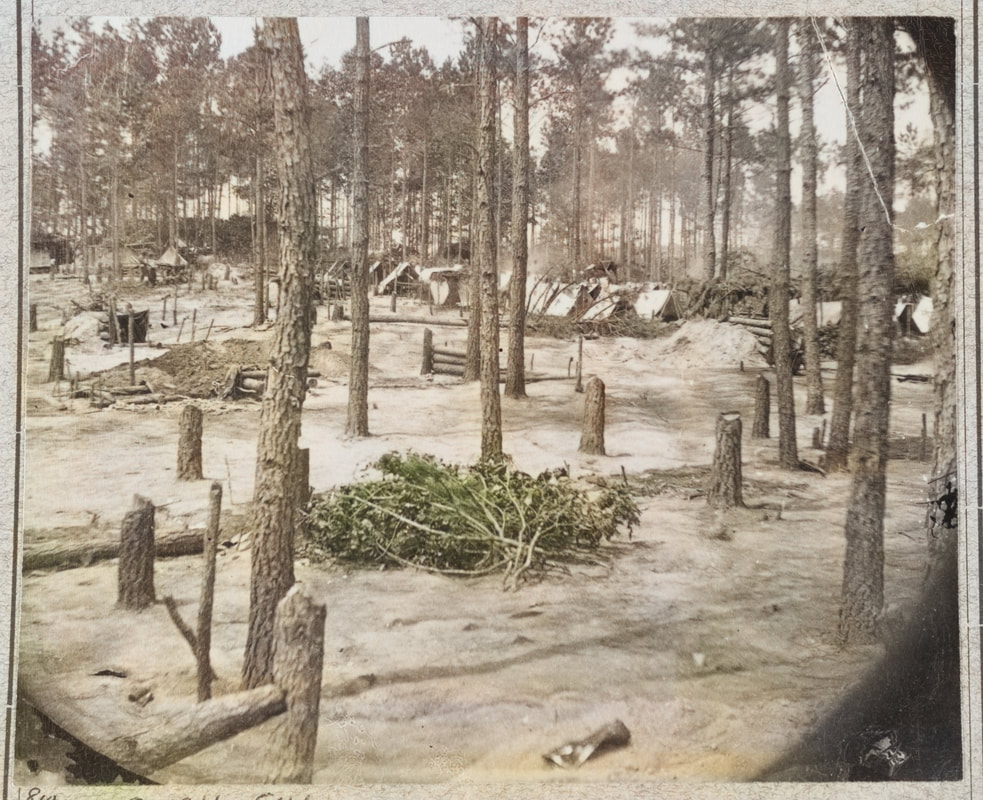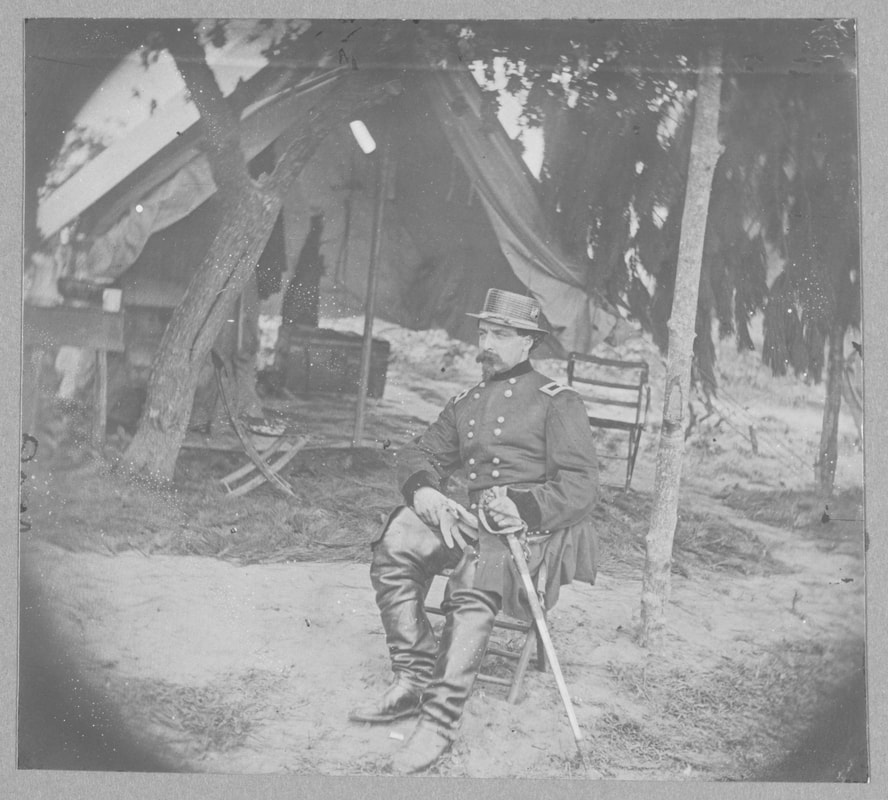Harrison's Creek USCT Camps
These five images of camps and bomb proofs appear to us to have been taken behind the protective bluff along Harrison's Creek in early-to-mid-August,1864, near Park Tour Stop 4. Timothy O'Sullivan was a stringer for Gardner's studio at the time and was working with photographer David Knox, who appears in two of the images as a human copyright. These images were colorized with Photoshop to bring out contrasts and details {with no artistic pretensions). In Grant and Lee: The Virginia Campaigns 1864-1865 (282-285), William Frassanito discussed these images in some detail and came to a different, although provisional, conclusion. Frassanito suggested these images were taken at the Baxter Road crossing of Poor Creek, placing the location east of the Crater. This was based on his interpretation of negative numbers 801-810, the inclusion of Ferrero's image in this group, and the location of Ferrero's division in the Ninth Corps sector in early August. Frassanito did acknowledge "that other black troops, members of the Eighteenth Corps of Butler's Army of the James, were also stationed on the Petersburg front at the same time, albeit in another sector located to the north of the Ninth Corps positions." Frassanito admitted that it would be difficult to confirm whether the USCTs in these images "were Ferrero's men."
Our identification of the Harrison's Creek location is based on several factors. The terrain of the Baxter Road crossing of Poor Creek nowhere matches the location of these photos. There the east bank (rear) is high and the west bank (to the front) is low and swampy for 100 yards before rising in a very abrupt bluff. Importantly, in our assessment, nothing could travel along this segment of Baxter Road in early August 1864 as it was under fire from Elliott's Salient. The only way to reach the bridge safely would be to carry the heavy cameras (along with fragile, quickly expiring, prepared photographic plates) through a maze of covered ways that led to the front from the vicinity of Fort Morton. To peer over the bluff (as do some of the soldiers in these images) at this point would invite a sharpshooter's bullet to the forehead. Harrison's Creek, on the other hand, was 500 yards behind the front line at the collection of earthworks that would soon-to-be Fort Stedman. The Court House Road crossed the creek safely here. The length of the bridge shown in the images would span Harrison's Creek today. A farm road leading to the Gibbon house ran parallel to the creek and could have been used by O'Sullivan and crew to get views upstream and downstream. It is a safe bet that the photography wagon was parked nearby. This location was directly behind Duncan's sector.
According to The Union Army 1861-1865: Organization and Operations, vol. 1, pg.482: the 18th Corps occupied the right flank of the Petersburg lines after August 3rd. Duncan's Brigade consisting of 4th and 6th USCTs with 10th USCT attached, was ordered into the Petersburg lines on August 3rd and stayed until August 16. Then 4th and 6th USCTs were sent to Dutch Gap. Night of August 14-15, 18th Corps extended left to replace 5th Corps and held the line from the River to near the Crater.
|
|
The Photographs are arranged in a possible sequence. When the photographers first arrived few soldiers are about, then things become more crowded and posed, as other soldiers arrived and realized they are being photographed. The camera is shifted to capture closer views of these soldiers. The first photo shows negative number 803, but an earlier number 169? is scratched out. Not all of the original negatives have survived.
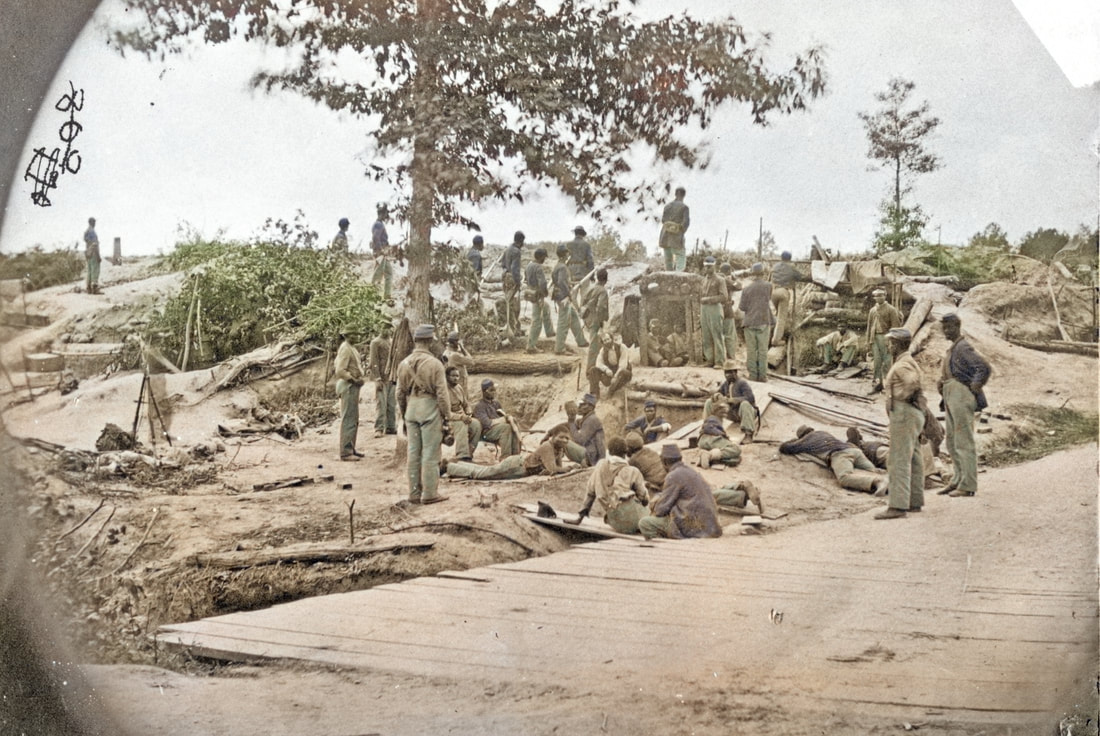
LC32443 left half of stereo image. [Part of Federal Line of Works showing bombproof tents occupied by U.S. Colored Troops in front of Petersburg, Va., Aug. 7, 1864]. photograph by Timothy O'Sullivan. Officer posed with six soldiers presenting bayonets to the enemy. David Knox posed at center of the group in white shirt and vest. Scratched out negative numbers here are 170 and 809.
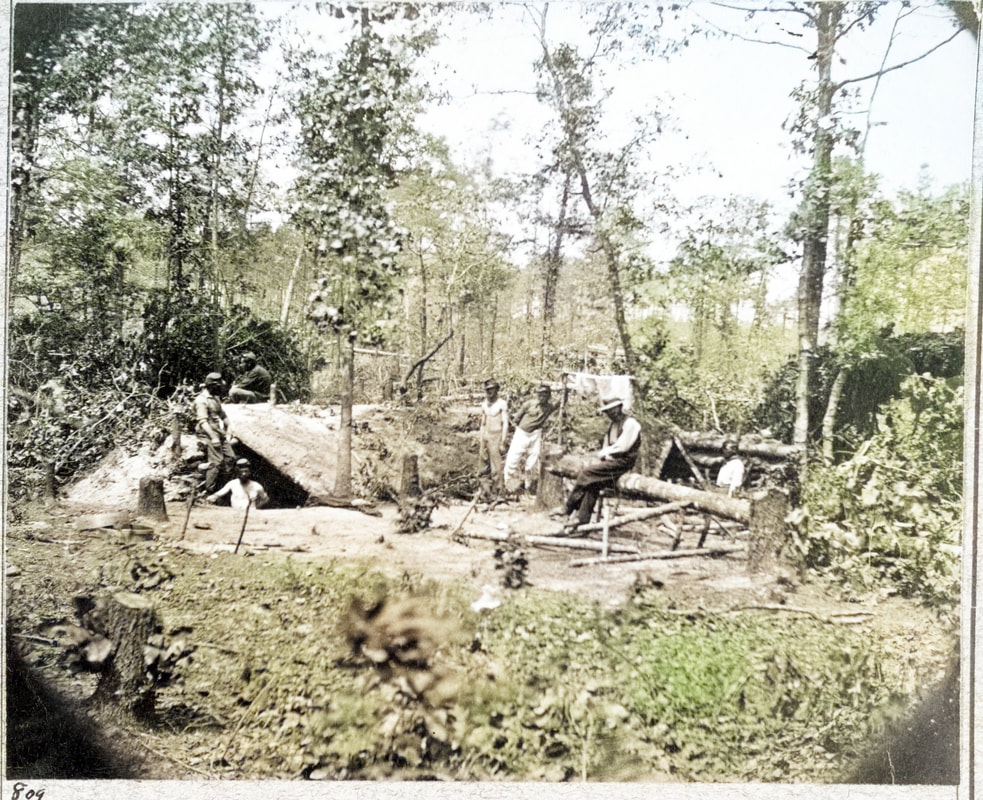
LC32407 print colorized. [A bombproof shelter for the soldiers during the siege of Petersburg, August 10, 1864], negative by Timothy O'Sullivan.Taken in a different location and dated three days after the above series. Rare to have exact dates attached to the photos. No. 809 in the lower left corner of the mount. Looks like Knox seated on the log in right mid-ground.



